When bending metal by applying heat you must first know what type of metal can be bent using heat. I am not only talking about metal composition but also what metal profiles you can bend.
Metals you can bend with heat
Most types of construction metals can be bent using heat.
- Low carbon steel(Mild steel)
- Medium carbon steel
- Cast steel
- Stainless steel
- Aluminum
The only metal that you should most likely won’t be able to bend with heat is high carbon steel or cast iron. Due to its carbon content, it might just crack when you heat it or as soon as you try to bend it.
I also recommend to try and avoid heating up stainless steel or aluminum because it does weaken the structural strength of the metal. If you have to you should try to only heat it once and get your bend because the more you heat and bend it, it will crack.
What metal profiles can you bend with heat?
The metal you will be bending with heat is low carbon steel/mild steel and the type of profiles that you can bend with heat only are limited to any bar type of profile.
- Round bar
- Square bar
- Flat bar
You should avoid bending metals with multiple walls or a hollow center.
- Pipe
- Tubing
- Beams
- Channels
- Angle iron
The reason why you won’t be able to bend these types of profiles with heat at face value is that they will just collapse into themselves or create an awkward fold.
Light bending in single-digit degrees may still be possible with these profiles but will be better to just create the appropriate preps before bending or cutting and welding them together.
Max thickness of metal you can bend with heat
This is a difficult question to give a one size fits all answer but the thicker the metal the harder it will be to bend. I recommend you limit yourself to around 12mm or ½ inch thicknesses especially if you are only doing this for home, DIY, or light professional work.
Bending carbon steel/mild steel with heat
What tools you will need to bend metal using heat
Before you start to bend you will need a few things to take into consideration.
- Proper area to bend
- Cutting-torch
- Welder
- Clamp
- Adjustable wrench
Proper area to bend
When bending metal with heat there is an obvious thing you will have to take into consideration and that is the heat produced. Mild steel melts at 1350oC-1530oC (2462oF-2786oF) and wood burns at around 550oF.
So choosing where to set up for bending metal will take some thinking. As mentioned above you would absolutely avoid any wooden or plastic table from the get do and rather opt for a metal surface table.
If you don’t have any sort of metal surface table try clamping your piece so it extrudes a bit over the table/surface you want to use. Just make sure no direct heat is applied to the surface you are clamped to. I recommend using an old piece of sleeper wood if you don’t have a metal surface because it is a bit denser and you won’t miss it too much if it gets charcoaled a bit.
Cutting-torch
When bending you will need something to provide heat. I recommend you use an oxy-fuel cutting torch or you can use a high-pressure blow torch to heat up the metal. The only real downside a blow torch can have is that it may take a while to heat up the metal till red hot, especially if you want to bend relatively thick metals 10mm and up.
Welder
A welder isn’t an essential tool for bending metal with heat but it will help out a lot. You will most likely need a welding machine to tack a piece of round bar to the metal surface to create a sort of guide for you to bend around. This is best done if you are looking to create 90-degree angles for handles.
You can also use a welder to tack the end of the piece that you want to bend so it doesn’t move while you are bending or twisting the metal.
Clamp
The clamp unlike the welding machine will mainly be used just to keep the piece in place when you want to bend it. This is best used if you don’t have a metal surface to tack the piece you want to bend to.
Adjustable wrench
An adjustable wrench will mainly be used as a lever to bend the piece. You will place the mouth of the wrench to the end not fixed to your surface and then push it towards you till you have the desired bend.
Try to keep the end close to the surface to avoid having a twist in your final product. You can also use something else an adjustable wrench works in most situations.
You can even tack a piece of scrap round bar to the end and use it as a lever that you can remove easily after bending.
What to do before you start to bend
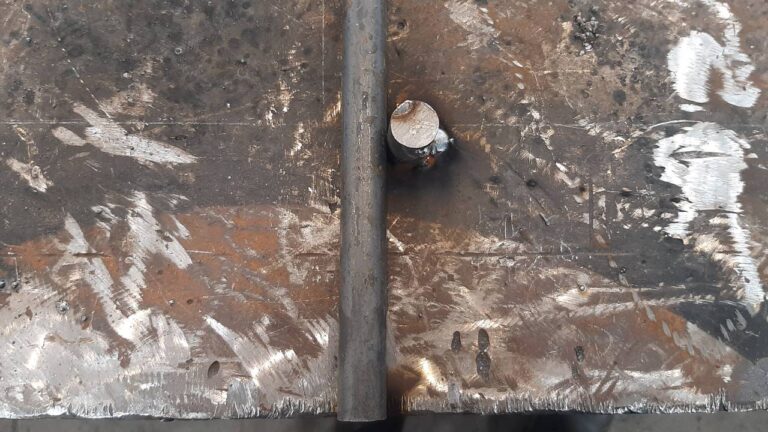
First, you will have to mark out where you want to bend. Remember when bending metal it stretches on the outside so if you have something that is 12mm thick and 100mm long and you plan to give it one 90-degree bend in the middle the total length of your item will be 106mm after bending.
You can think of it as the more bends at greater angles you have the longer the metal becomes so you should take it into consideration when cutting your metal if it is important.
Secondly, you will want to secure your piece and start to heat it up.
To find the length your piece will increase with the angle of bend you can use:
- The angle of bend/90 x radius = length of increase
The proof is if the angle of bend is 90-degrees the overall length will increase by the length of the radius. Note that the size of the bend’s radius doesn’t affect the length increase.
Why does it increase the length of the radius and not the diameter? This is because if you take the straight length you are technically working from the center and not the sides. When you bend it your center points will stay the same, but the outer side will increase in length. This gives you an increase in the overall length of just the radius because half stretches and the other half compresses.
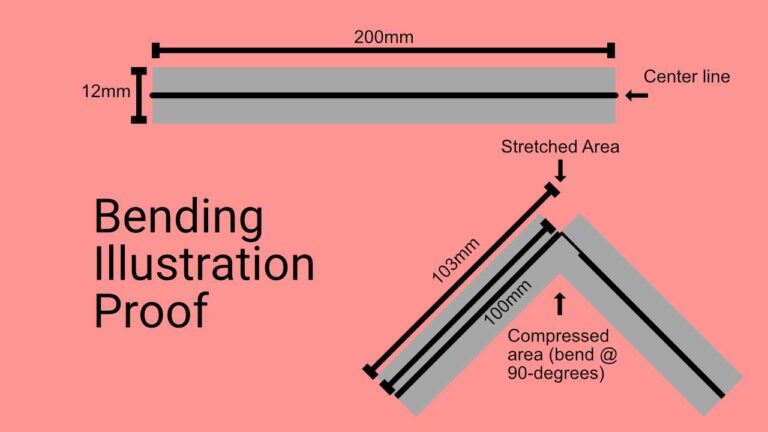
Applying heat with an oxy-fuel torch
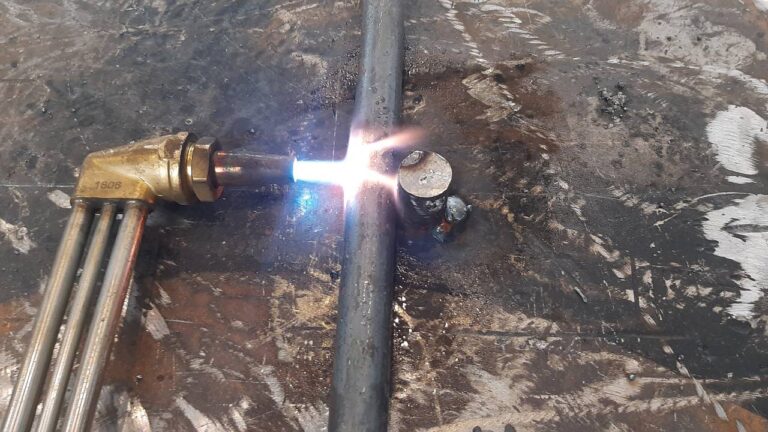
Before you start bending you will need to do what the title implies and that is heating up the piece you want to bend. As a rule of thumb, the thicker the metals are the more you would want to heat them.
Try to keep your heat source close till you see it starting to heat up and move it further till it is about an inch away. This is to avoid creating an ugly uneven surface that is caused by the air pressure blowing against the molten metal.
You should also heat evenly along the length of the radius you will like to bend. This is to get an even and consistent bend all the way through.
Bending the metal
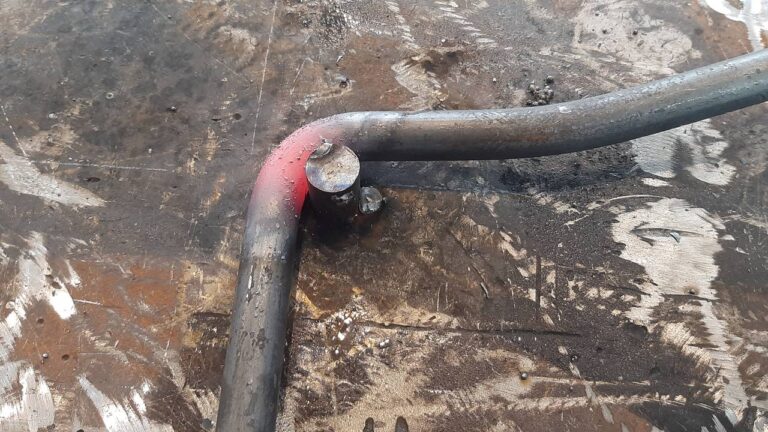
When bending the metal you should move the lever slowly and consistently towards yourself as flat to the surface as possible. Try keeping a constant flow of heat on the area you are bending to keep a uniform bend. I would recommend you ask someone to help you hold the heat supply so you have a more focus on the actual bending process.
What to do after bending
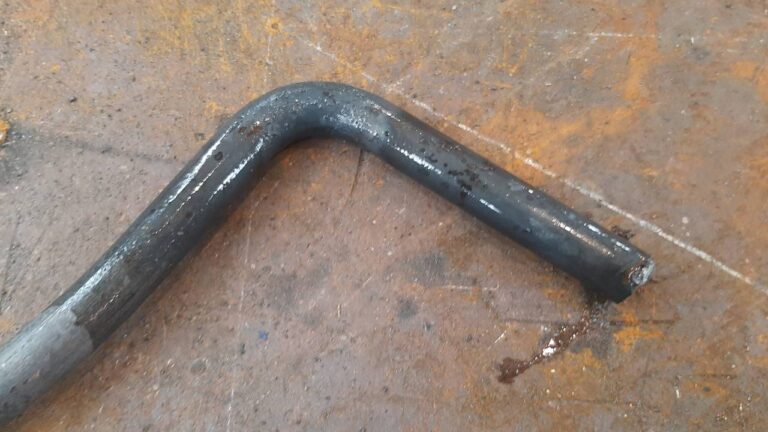
After you have the desired bend your piece of metal will still be extremely hot. You can either leave it where it is to cool down or drop it in some water to cool down a lot faster. This all depends on you just remember to not pick it up with your hand rather use some sort of pliers or metal tongs.
Bending curves or swirls into the metal with heat
After you have the desired bend your piece of metal will still be extremely hot. You can either leave it where it is to cool down or drop it in some water to cool down a lot faster. This all depends on you just remember to not pick it up with your hand rather use some sort of pliers or metal tongs.
Long curves
As mentioned above you will need to apply heat over the length of the curve you will want to bend and slowly bend to have even distribution over the whole curve.
Bending swirls
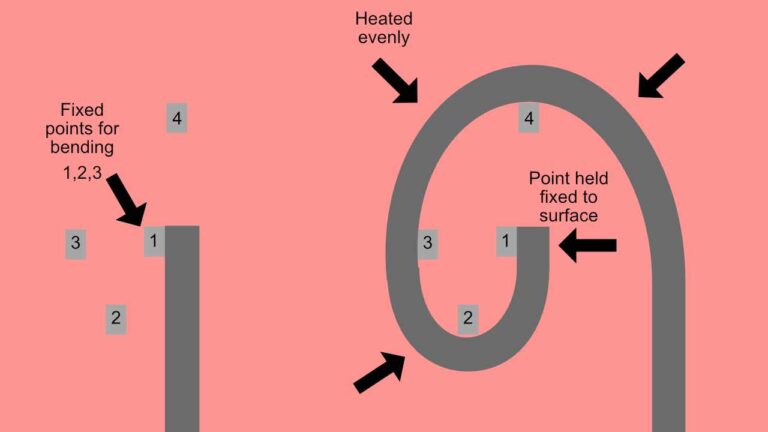
A swirl is probably the hardest type of bend you will face because getting it even can be difficult but not impossible.
Place out a jig how you would like to bend your swirl then heat it and bend it slowly to follow your jig.
Conclusion
This post is mainly about simple degree bends but there’s a lot more you can do with a cutting torch if you have one on hand.
Bending metal with heat isn’t that hard to do it is just hard to get it perfect. So continue to practice and you will start to get the feel.




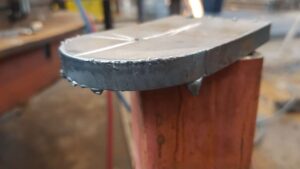
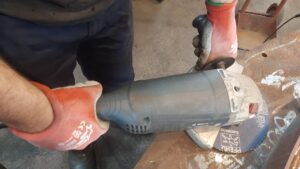
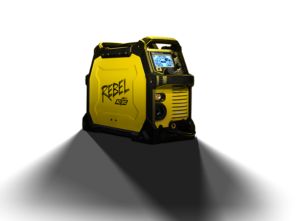
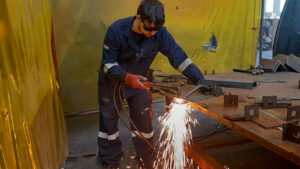

2 Responses
It’s great that you elaborated that heat should be pressed for the metal to achieve the ideal bending. My uncle mentioned the other night that he and his business partner were looking for a tube-bending company that could offer stainless steel and aluminum project beading processes for his business supplies. He asked if I had any idea what would be the best option to consider. Thanks to this informative article, I’ll tell him he can consult a well-known tube bending company as they can answer all his inquiries.
Awesome! When bending tubing you will need specialized equipment. If you bend it in a similar way as in this article you will flatten it at the points of the bend.